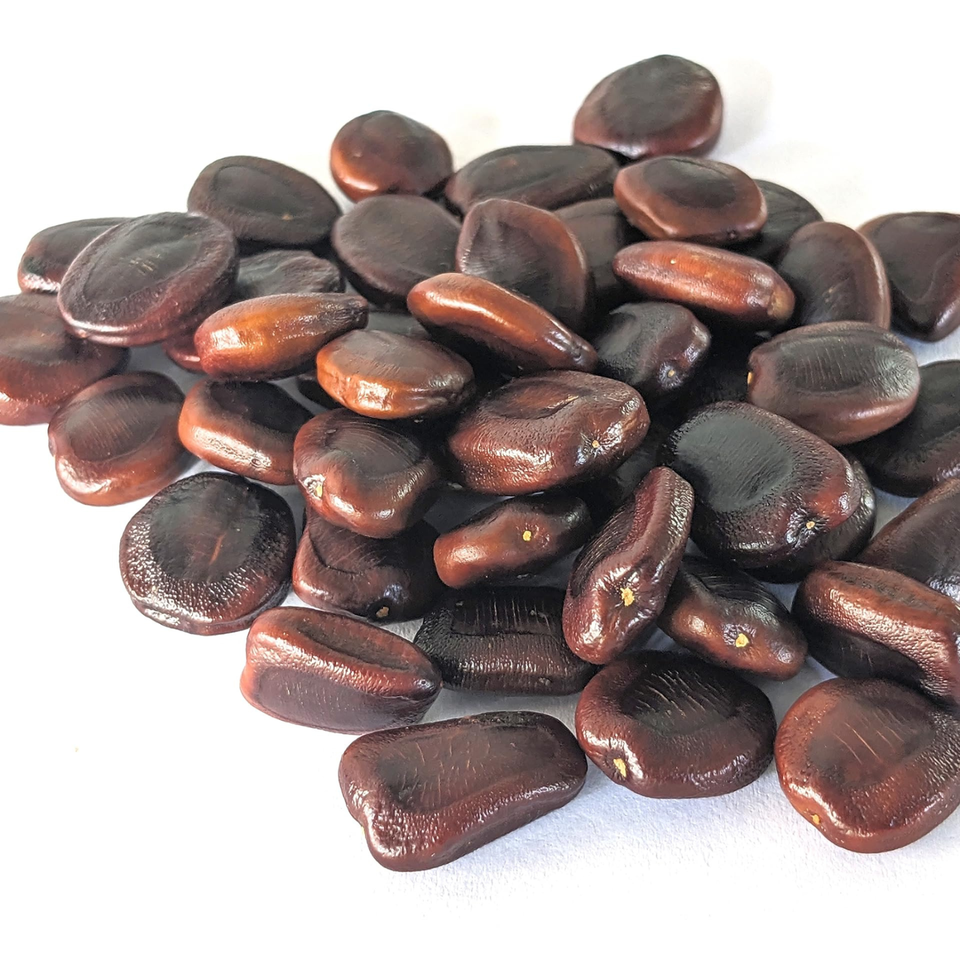Senci Green Garden
Siyambala seeds (Tamarindus indica) Natural Organic 10 Seeds
Siyambala seeds (Tamarindus indica) Natural Organic 10 Seeds
Couldn't load pickup availability
Siyambala seeds (Tamarindus indica)
10 Seeds
Tamarindus indica, commonly known as tamarind, is a tropical tree in the Fabaceae family, native to Africa but widely cultivated in tropical regions around the world for its edible fruit and other uses. Here's a detailed description of Tamarindus indica.
Appearance
Tree: Tamarind trees are medium to large in size, reaching heights of 18-24 meters (60-80 feet) with a dense, spreading canopy.
Bark: The bark of the tree is dark brown or grayish, rough, and deeply fissured as the tree matures.
Leaves: The leaves are pinnate, consisting of 10-20 pairs of oblong leaflets that are light green in color.
Flowers: Tamarind produces small, yellowish flowers with red streaks, borne in dense clusters at the ends of branches. The flowers are fragrant and attract bees and other pollinators.
Fruit Appearance
The fruit of Tamarindus indica is a pod-like structure that is long (5-15 cm) and curved, resembling a bean pod.
Color: When ripe, the pod turns brown and brittle, containing a sticky, sweet-sour pulp surrounding the seeds.
Flavor: The pulp inside the pod is tangy, tart, and slightly sweet, often used in culinary applications for its distinctive flavor.
Uses
Culinary: Tamarind pulp is a key ingredient in many cuisines, especially in South Asian, Southeast Asian, and Latin American cooking. It adds a sour flavor to dishes, sauces, chutneys, and beverages.
Medicinal: In traditional medicine, tamarind is used to treat digestive disorders, fevers, and inflammation due to its purported antibacterial and antioxidant properties.
Industrial: Tamarind seeds contain a high proportion of polysaccharides and are used in the textile industry for sizing and as a thickening agent in food processing.
Cultural Significance
Tamarind has cultural importance in various regions where it is grown. It is used in religious ceremonies, festivals, and traditional medicine practices.
In some cultures, the wood of the tamarind tree is used for carpentry and furniture-making due to its durability.
Overall, Tamarindus indica is valued not only for its culinary versatility but also for its medicinal and cultural significance, making it an integral part of tropical agriculture and cuisine worldwide.
Share














